Discover Streamlined Solopreneur: System-Driven Processes and Automations
Streamlined Solopreneur: System-Driven Processes and Automations

Streamlined Solopreneur: System-Driven Processes and Automations
Author: Joe Casabona, Automations Builder
Subscribed: 6,580Played: 92,292Subscribe
Share
© 2016 - 2025 Joe Casabona
Description
You didn’t become a business owner to spend your days wrangling apps that don’t work well together. When your tools aren’t in sync, every task takes longer—stealing time from your clients, your family, and yourself. But it doesn’t have to be that way.
Each week, I’ll share real automations I’ve built, simple integrations, and smart workflows so your tech stack just works.
I’m Joe Casabona, and I help small business owners run their business in less time—without sacrificing quality or burning out. After hitting my own breaking point, I rebuilt everything around simple systems and automations that now save me 12+ hours a week.
Each episode brings you real-world strategies, smarter workflows, and practical tools to help you reclaim your time and actually enjoy the freedom you set out to create.
Because your business should support your life—not take it over.
Each week, I’ll share real automations I’ve built, simple integrations, and smart workflows so your tech stack just works.
I’m Joe Casabona, and I help small business owners run their business in less time—without sacrificing quality or burning out. After hitting my own breaking point, I rebuilt everything around simple systems and automations that now save me 12+ hours a week.
Each episode brings you real-world strategies, smarter workflows, and practical tools to help you reclaim your time and actually enjoy the freedom you set out to create.
Because your business should support your life—not take it over.
510 Episodes
Reverse
We turned productivity into a fantasy draft! 🏆Four small business owners battle it out, picking the apps and tools we cannot live without — with some surprise steals, hot takes, and even a bonus round for our favorite analog gear.Looking for new ways to save time, systemize your business, and actually enjoy the tools you use? This draft is packed with ideas you’ll want to steal.Draft Order: Mike SchmitzLayla PomperCat MulvihillJoe CasabonaWondering how you can manage your time to find the perfect balance? Take the Business Overwhelm Diagnostic.Show NotesMike Schmitz | Episode 422Layla Pomper | Episode 495Cat Mulvihill | Episode 305ObsidianCircleKit (ConvertKit)ClickUpRaycastCanvaMissiveZapierSmartSuiteKajabiNotionSunsamaZoomApple Text ReplacementSavvyCalStream DeckSaneBoxEcamm LiveTodoistGoogle DrivePersonal Retreat Planner (Mike’s custom tool)RocketbookField NotesOpus ClipTellaGatherVimeoWhat do you think? Send your feedback to streamlinedfeedback.com
★ Support this podcast ★
I just wrapped up a Social Growth for my friend Chenell’s community where I posted on LinkedIn for 40 days. Here’s what I learned and what’s next. Send your feedback at https://streamlinedfeedback.com
★ Support this podcast ★
Can you really delegate out when you are your business? Don’t people hire you to work with…well, you? That’s the question Justin Moore and I wrestle with. We talk about the challenge of running personality-driven businesses, why it’s so hard to step away, and how to build a company that serves your life instead of consuming it.Justin shares how he’s built a coaching business with a team he trusts, why impact is his North Star, and the mindset shift that helped him let go of control. We also get real about balancing work with family time, the guilt that comes with stepping away, and why building a lifestyle business is just as valid as chasing a big exit.Things get real – it’s something all business owners need to think about. Wondering how you can step away from your business? Take the Business Overwhelm Diagnostic.Top TakeawaysUse a North Star mission (like impact) to guide decisions about hiring, delegating, and growth.Letting go of control is a mindset shift—delegating doesn’t dilute your business, it expands your reach.A lifestyle business is not a failure; you don’t have to build for an exit if you love the work.Balancing work and family isn’t about hacks—it’s about daily choices to be present in the moment.Show NotesSponsor Magnet Podcast (hosted by Justin and me)Sponsor Magnet (Book)Creator WizardKey Person of Influence (Book by Daniel Priestley)Write Useful Books (by Rob Fitzpatrick)One to Many: The Secret to Webinar Success (by Jason Fladlien)CEX (Creator Economy Expo)Lulu (Publishing)What do you think? Send your feedback to streamlinedfeedback.com
★ Support this podcast ★
It seems like every day there’s a new tool designed to help us be more productive. They promise to help us to more, faster, better, with fewer resources. And it’s easy to get shiny object syndrome. So how do you know when it’s time to switch, or when it’s a waste of time and energy?Luckily, as a chronic tool switcher, I’ve thought a lot about this very problem. And I have a framework to help you decide.We’ll go through the 4 questions you should ask yourself when evaluating whether or not to switch. Then we’ll apply these tests to case studies so you can see how they work with actual examples.Wondering if you should switch? Go to https://shouldyouswitch.com to apply this framework!What do you think? How do you decide when to switch tools? Let me know at https://streamlinedfeedback.com
(00:00) - The Rapid Evolution of AI Tools
(01:26) - Framework for Tool Switching
(06:39) - Case Study: Dropbox to Google Drive
(11:22) - Case Study: Cal.com to Calendly
(13:30) - Case Study: Switching from Arc
(18:30) - Final Thoughts on Tool Switching
★ Support this podcast ★
I’m considering a membership again, but this one is different! I’m going to do a paid newsletter, powered by Memberful and Kit.
★ Support this podcast ★
Running a business while raising kids feels impossible some days. Between checking emails at the playground and working after bedtime, it's easy to feel like you're failing at both. But what if there was a better way?Amanda Goetz has cracked the code on building an authentic business without the hustle culture nonsense. As a single mom of three who's built multiple six-figure income streams, she's learned that success isn't about doing more—it's about doing the right things at the right time.In this conversation, talk about her surprisingly simple systems that keep her business running while she stays present for her kids. Amanda shares the real strategies that work when you can't afford to waste time.But we also cover how to be authentic in an AI world, and she gives me the single best piece of advice I’ve personally gotten for how to balance both better.Are you worried about burning out? Take the Business Overwhelm Diagnostic.Show NotesAmanda GoetzOrder Toxic GritAmanda’s Two-Do SystemFollow Amanda on LinkedInFollow Amanda on InstagramWhat do you think? Send your feedback to streamlinedfeedback.com
★ Support this podcast ★
It’s new iPhone Day! It was a big year for me as it was time to upgrade several of my devices. Here’s what I got, and why.
★ Support this podcast ★
Ever go to do something – a task for your business, yard work, cooking – and suddenly realize you’re not sure where to start? It’s not that you don’t know what to do…you just need a little help organizing your thoughts. It would be a lot easier if everything is written down, step-by-step. That’s where SOPs come in. Most solopreneurs think SOPs are only for big companies with teams of 50+. But the truth? Even if you’re a business of one, SOPs (standard operating procedures) can save you time, reduce errors, and keep your business running smoothly—especially on the days when your energy or focus isn’t there.In this conversation with Layla Pomper of ProcessDriven, we dig into how SOPs can simplify your work, help you automate and delegate, and even free up more headspace for the creative stuff you actually enjoy.Trying to figure out which SOPs you should create first? Take the Business Overwhelm Diagnostic.Top TakeawaysSOPs are like recipes—great for capturing details you’ll forget in the moment and for keeping quality consistent.Writing down the process first makes automation or delegation way easier—and prevents wasted time tinkering.SOPs aren’t about bureaucracy; they’re about removing decision fatigue and protecting your creative energy.Show NotesLayla PomperClickUpAsanaMondayNotionTodoistZapierMakeMissiveGatherGoogle CalendarRiversideRSS.comTellaEcamm LiveWhat do you think? Send your feedback to streamlinedfeedback.com
★ Support this podcast ★
Ever stumble into entrepreneurship by accident? Dylan Redekop did — and he’s built a business that lets him spend time with his family, stay fit, and still grow his newsletter. We get into freelancing vs. solopreneurship vs. contracting, why balance matters more than hustle, and the little systems that keep ideas from slipping through the cracks (while still allowing us to be present parents). Looking for a way to find balance to run your business and get the restorative time you need? Take the Business Overwhelm Quiz.Top TakeawaysFreelancer vs. Solopreneur: Freelancers sell their skills to other businesses, while solopreneurs often build a one-person business with products or services. Both models can work, but knowing how you identify helps clarify your work.Balancing Contract Work and Side Projects: Choosing projects that complement each other creates a symbiotic relationship instead of competing for time.Making Space for Hobbies and Health: Fitness, hobbies, and restorative time aren’t luxuries—they’re essential to being a better parent, partner, and business owner.Show NotesGrowth Currency (Dylan’s Newsletter)Dylan Redekop on LinkedInGrowth in Reverse To Grow Your Newsletter, You Need to Have Unique Content with Chenell BasilioRethinking Our Relationship with Time and Money with Khe HyWhat do you think? Send your feedback to streamlinedfeedback.com
★ Support this podcast ★
Ever feel like your business eats up every free moment? The truth is, you don’t need Taylor Swift-level fame or Hormozi-style hype to succeed. What you actually need is space—room to create, promote, and step away without guilt.That’s why I use the GAPS framework: Gear, Automations, Playbooks, and Support. It’s the system that helped me reclaim 10–12 hours a week, even during one of the busiest summers of my life. In this episode, I break down how you can use GAPS to stop fighting with your tools, cut the manual busywork, and finally get your time back.Top TakeawaysFame hacks don’t apply—your focus should be on knowing your audience, creating for them, promoting, and experimenting.The biggest bottleneck isn’t knowing what to do—it’s finding the time to do it.Gear: Invest in reliable tools so tech doesn’t slow you down.Automations: Use tools like Zapier, Riverside, and Notion to handle repetitive tasks.Playbooks: Create simple SOPs so you or anyone else can follow the same steps every time.Support: Delegate to a VA, editor, or even students—don’t try to do it all yourself.Show NotesWatch on YouTubeOverwhelm QuizRiversideRSS.comTella.tvEcamm LiveZapierNotionSamson Q2U Microphone
★ Support this podcast ★
I've had a few conversations with parents lately about how it feels like our kids are being pushed through, "the machine." When we get that personal touch, it's notable — even unexpected. I fear AI is killing personal touch in the name of reach. If you want to stand out, keeping the personal touch is quickly becoming the easiest way. Have thoughts? Send feedback to https://streamlinedfeedback.comThis description was not written by AI. I'm going to stop doing that.
★ Support this podcast ★
What happens when you’re a dad of 3, working a full-time job, and still running not one but two side hustles? That’s the question I put to my friend Matt Medeiros — fellow podcaster, WordPress veteran, and all-around content machine.We talk honestly about what it takes to juggle parenting, work, and multiple projects without burning out (or completely losing your mind). From managing sponsorship revenue to choosing the right tools, to figuring out when to reinvest vs. cash out, Matt shares what’s working for him — and where he’s still figuring it out.If you’ve ever wondered how to balance family life while chasing creative business ideas, you’ll take away some real strategies (and a few good laughs).Wondering how you can manage your time to find the perfect balance? Take the Business Overwhelm Diagnostic.Top TakeawaysCommon threads make side hustles sustainable – keeping your work, projects, and interests connected makes context-switching easier and prevents burnout.Don’t turn every hobby into a business – it’s tempting, but some things are better left as hobbies so you can actually enjoy them.Content creation is career insurance – podcasting, writing, or videos not only generate side income but also build a portfolio that makes you more valuable in the job market.The right tools save hours – Riverside, Descript, and Opus Clips help streamline production, while letting him focus on strategy instead of getting lost in the weeds.Show NotesGravity FormsThe WP MinuteThe Podcast SetupRSS.com DescriptRiversideOpus ClipsKit.com (formerly ConvertKit)GhostWhat do you think? Send your feedback to streamlinedfeedback.comContains affiliate links. ChatGPT helped with writing this description.
★ Support this podcast ★
I’ve been testing Gemini, ChatGPT, and Claude to see which one actually helps me. Claude felt forgetful, so I dropped it. ChatGPT is still great at structured stuff, like rewriting transcripts. But for things I didn’t know how to start—like turning an outline into a flowchart or converting a school calendar into an ICS file—Gemini nailed it. My takeaway? AI shines when I need guidance and structure. When I’m just being lazy, it gives me junk and reminds me I should probably just do the work myself.Incidentally, ChatGPT did a better job at writing this summary…
★ Support this podcast ★
Sometimes running a business can feel a bit like the curse of Sisyphus — pushing a boulder up a hill, only to have it roll back down again. Futile labor…because we dared to find life’s loopholes. But the difference between us and Sisyphus is we’re not cured. And our problems are totally fixable.Today, I’m going to tell you about my D.A.D. Framework: how to Document, Automate, and Delegate your way out of overwhelm. Then I’ll tell you about a resource to help you figure out where to start.What You'll Learn:Why running a business can make you feel like the mythical SisyphusThe three pillars of the D.A.D. framework and how to implement each oneReal automation examples that save hours without expensive toolsHow to delegate effectively (even with basic-level VAs)A 6-question diagnostic to identify where you're struggling mostWondering how the D.A.D. Framework can help you? Take the Business Overwhelm DiagnosticShow NotesLooking for help with business overwhelm? Check out The Control Room.Watch on YouTubeTake the Overwhelm Diagnostic: streamlined.fm/overwhelmEpisode 486 with Charlotte Crowder: streamlined.fm/486Send feedback: streamlinedfeedback.com
★ Support this podcast ★
I'm calling out something that's been bothering me since ChatGPT-5 launched - people are getting upset about AI "changing its voice" and referring to these tools as teammates. This kind of personification is dangerous because it gives AI agency it doesn't actually have. Just like you wouldn't call a hammer your teammate, we need to remember AI is simply a tool that gives statistically likely responses.This description was written by Claude AI.
★ Support this podcast ★
Ready for the ultimate tech setup tour? After getting tons of questions about my gear and tools, I'm pulling back the curtain on EVERYTHING I use to run my business - from my $3000+ recording setup to the analog tools that keep me organized.In this comprehensive walkthrough, I cover my entire recording studio (Sure SM7B, RoadCaster Pro 2, Sony A6400), the software that powers my business (Kit, Notion, Todoist), my Spartan travel setup, and even my favorite pens and notebooks.Plus, I'll share why I'm considering going "AI vegan" and which tools are worth the investment vs. the ones you can skip.Whether you're building your own podcast setup, looking to streamline your solopreneur business, or just love geeking out over productivity tools, this episode has something for you.Are you overwhelmed by the number of tools you have? Not sure what you can eliminate vs. which you need? Get the, take the Business Overwhelm DiagnosticTop TakeawaysSeparate "business critical" software from nice-to-have apps - My core apps don’t change super often. But there are a bunch I like to try and tinker with to see if they’ll work better.Automation tools should enhance, not complicate your workflow - My change back to Zapier due to user-friendly troubleshooting and testing capabilities matter more than saving money when things break.Analog tools still have their place in digital workflows - Physical notebooks, quality pens, and handwritten planning complement digital systems by providing different cognitive benefits and serving as reliable backups when technology fails.Want the full list with links? Everything mentioned is at https://casabona.org/usesWhat's your essential business tool? Let me know at https://streamlinedfeedback.com
(00:00) - Introduction
(00:39) - Recording Setup: Microphone, Windscreen, and Boom Arm
(03:38) - Software for Recording
(09:24) - Simplified Travel Recording Setup
(12:29) - General Hardware
(15:30) - Business Software
(19:16) - Essential Apps for Mac and iPhone
(24:14) - AI Tools: ChatGPT, Claude, and Granola
(25:00) - Analog Tools
(26:17) - Final Thoughts
★ Support this podcast ★
I have a confession to make: I use my GPS every time I drive. It’s not that I don’t know where I’m going. It’s that I’ve told myself, “the GPS knows more than me – it has traffic data!” Nick Bennett pointed out on LinkedIn that there was a time before GPS, when people knew how to read a map…or just get around. And that was a present in today’s guest’s mind when he made a big decision. Joe McKay is a LinkedIn Ghostwriter who used AI for everything…until the day he decided he’d go AI Vegan. Today we’re going to talk about what it meant for his business and his mind, and if you should try it too. Want to go AI Vegan but worried you’ll be even less productive? Take the Business Systems Diagnostic and let’s see how we can fix your systems! Top Takeaways:Joe found that, after a while, he was more concerned with whether or not people could tell if his writing was AI-generated, and less about what his customers…and their audience…actually needed. AI gives us the ability to do more, faster. But you’re making a choice – a bunch of prefab, low-quality stuff, or high-quality, hand-crafted work. But Joe and I have deeply considered what we’re losing by outsourcing to AI. Much like exercise, you need to actually do the knowledge work for you to stay sharp. Is AI dulling the skills we’ve staked our business on?Show Notes:Joe McKay on LinkedInJoe’s Beehiiv Nick’s GPS post on LinkedInAm I Outsourcing My Brain to AI? [Audio Note]I want to hear from you! Send your feedback to https://streamlinedfeedback.com. *While I usually use AI to help me write the descriptions and takeaways, this time around, I decided to go AI Vegan, out of respect for Joe!
★ Support this podcast ★
I spent the week at the beach thinking about my signature framework, but honestly, I’m struggling to define what I really want to do and how I want to help people. Despite all the different ways I currently serve clients - from podcast coaching to building automations - I’m frustrated that I don’t have a clear answer about my core purpose. I’m asking for your input: if we had coffee together for an hour, what would you ask me for help with professionally?Write in at https://streamlinedfeedback.com Episode description written by Claude AI
★ Support this podcast ★
I used to lie awake at night thinking about tomorrow's tasks and couldn't be present with my family because my mind was stuck on work problems. Sound familiar? The game-changer wasn't better time management—it was creating clear boundaries between work mode and family mode.After years of working until the last possible second and then feeling mentally scattered during family time, I finally did something about it. Now I have a system that lets me be fully present with my kids while knowing nothing important will slip through the cracks.I'll walk you through my complete startup and shutdown routine system, from monthly planning all the way down to my daily brain dump.If you're tired of checking email at the playground or thinking about work during bedtime stories, this episode will show you exactly how to create the mental boundaries that actually work.Do you struggle to stop thinking about work when you’re with your family? Take the Business Overwhelm Diagnostic and get the plan you need to fix it.Top TakeawaysCreate intentional day planning - Use a startup routine to decide what you'll accomplish before opening email or social media, preventing reactive scrambling through your inboxBuild context-switching boundaries - Startup and shutdown routines act as mental flags that signal when work begins and ends, especially crucial for home-based solopreneurs without commutesImplement a brain dump system - The most important habit is unloading everything from your mind at day's end so you can be fully present with family without worrying about forgotten tasksShow NotesFree Startup and Shutdown Routine TemplatesWatch on YouTubeObsidianTodoistWhisper MemosZapierChatGPTTodoist integration for ObsidianGoogle Calendar integration for ObsidianToggl plugin for ObsidianAmanda GoetzChris LemaHave questions, comments, concerns? Send your feedback to https://streamlinedfeedback.com
★ Support this podcast ★
I just updated my /now page for the first time in a while, and it’s become much more comprehensive than before. I walk through all the new sections I’ve added - from current projects and media consumption to streaming services and personal details. There’s also a fun revelation about my five-CD changer playlist that’s surprisingly close to what I actually had back in the day.Check out my /now page hereThis description was written by Claude AI.
★ Support this podcast ★


![What I Learned Posting on LinkedIn for 40 Days [Audio Note] What I Learned Posting on LinkedIn for 40 Days [Audio Note]](https://img.transistor.fm/KKPFms3Pnl_cCCcyLVWUeWM1H10CVWoPClXBe2mwnXU/rs:fill:0:0:1/w:1400/h:1400/q:60/mb:500000/aHR0cHM6Ly9pbWct/dXBsb2FkLXByb2R1/Y3Rpb24udHJhbnNp/c3Rvci5mbS81ZmJk/MDczNTI2ZDhjNzhl/NTY2YTMzOTVkZmE1/N2ZkNC5wbmc.jpg)


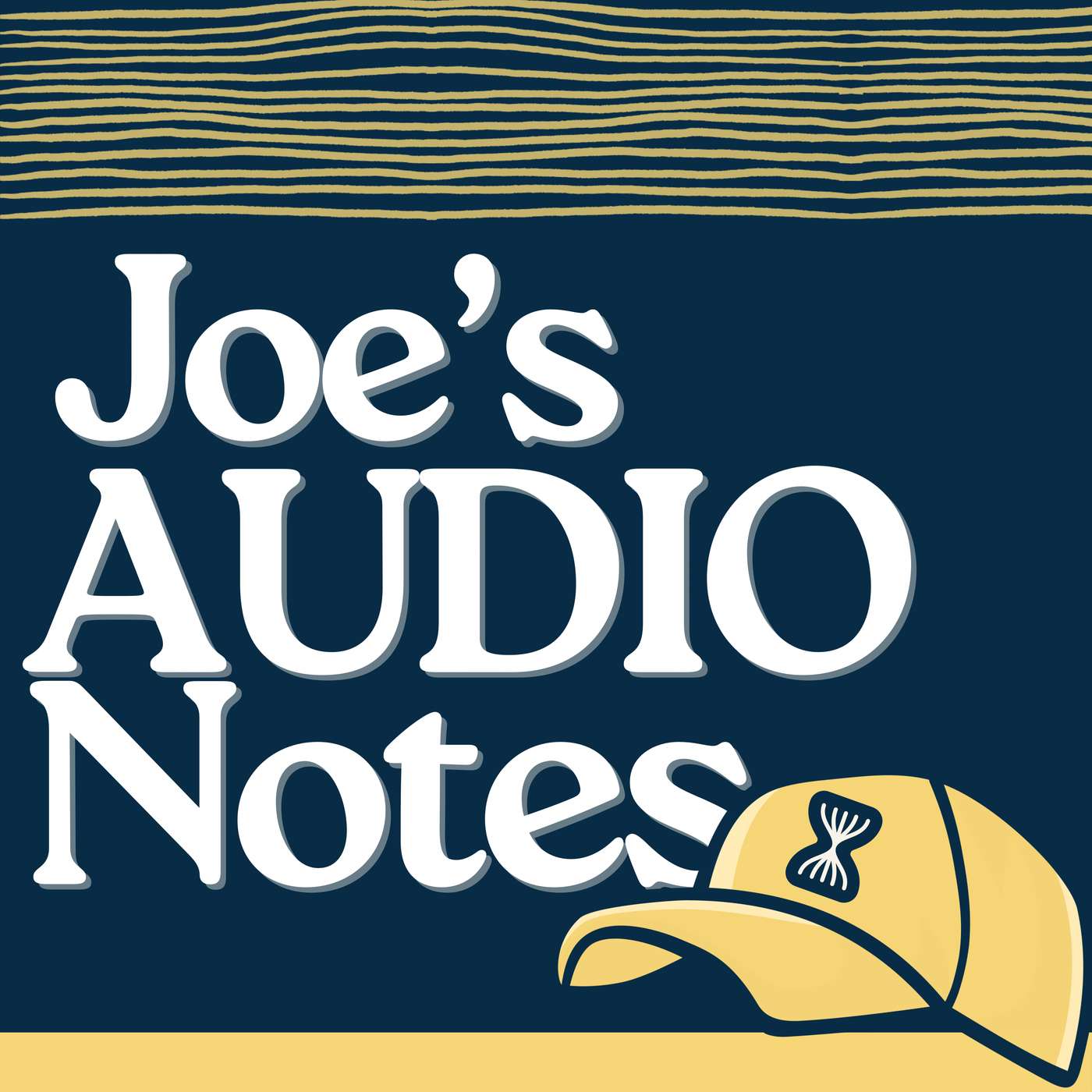

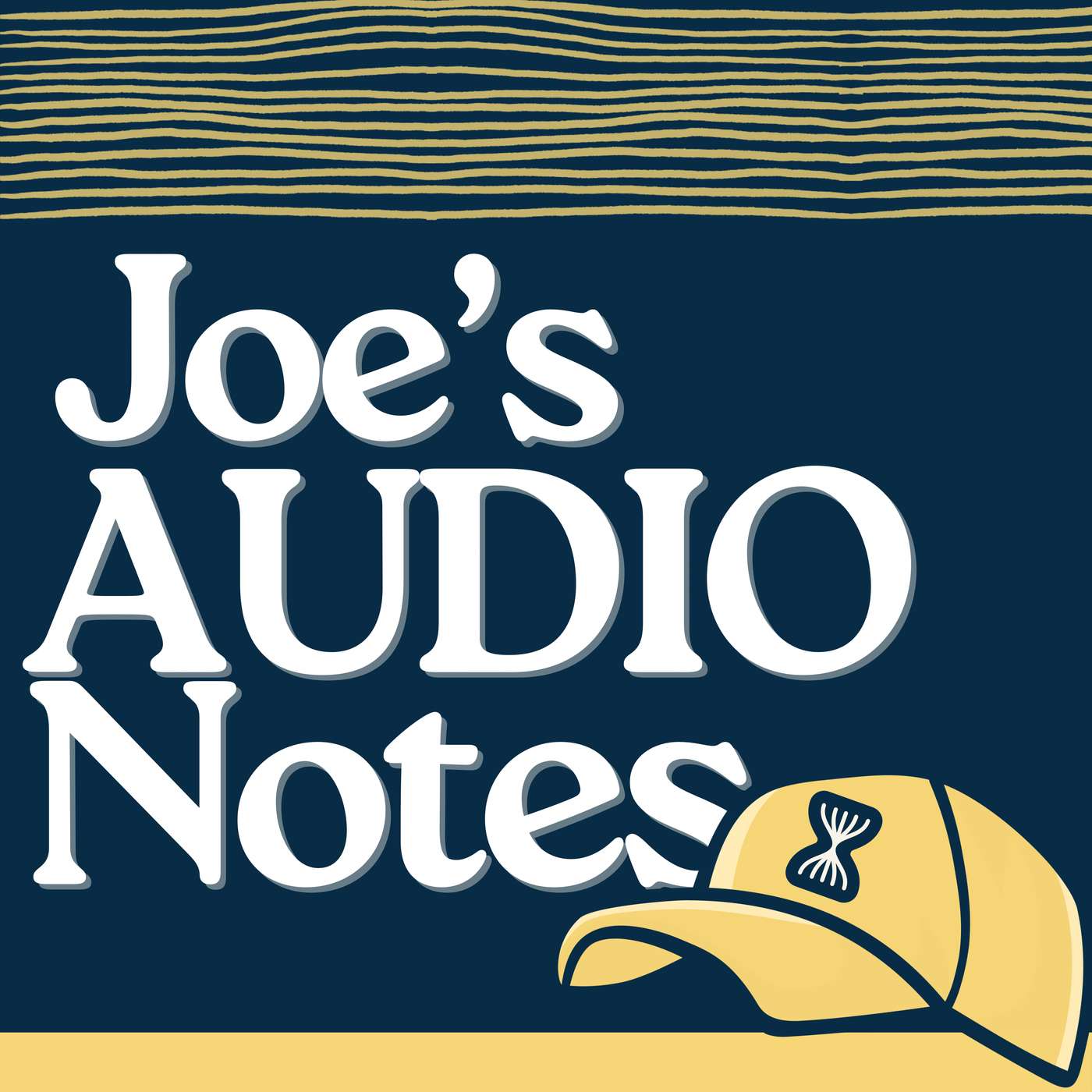

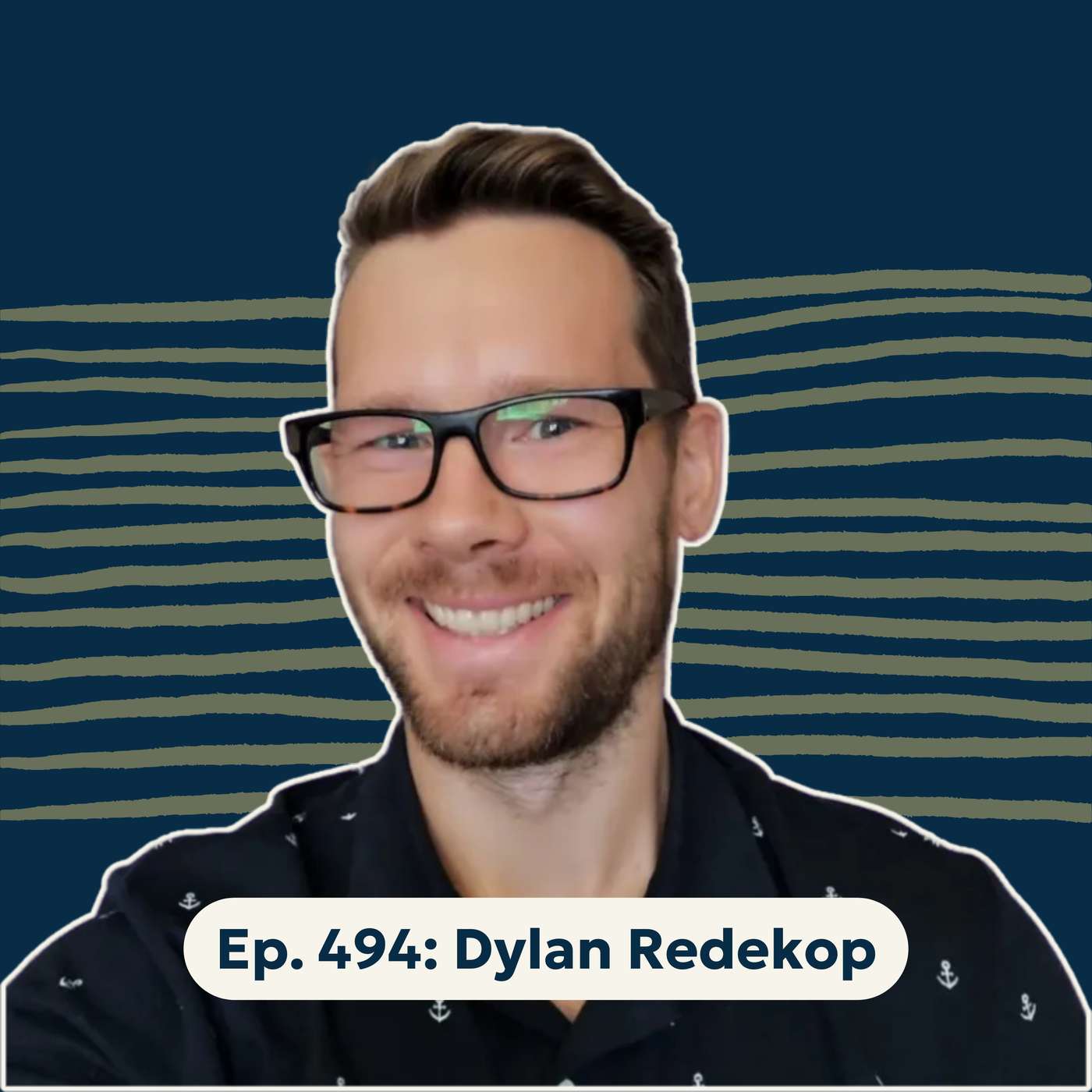

![Don't Let AI Kill Personal Touch [Audio Note] Don't Let AI Kill Personal Touch [Audio Note]](https://img.transistor.fm/4JELn2CxDS5NDskQmH7uPxfFjs2KEIi3F0w3c47Ay6M/rs:fill:0:0:1/w:1400/h:1400/q:60/mb:500000/aHR0cHM6Ly9pbWct/dXBsb2FkLXByb2R1/Y3Rpb24udHJhbnNp/c3Rvci5mbS9iMzA3/ZTg0N2EwZDBiMmNh/Y2I4MTIwMzFhYjk2/N2FjOS5wbmc.jpg)

![Is Gemini the Best AI Chat Thing? [Audio Note] Is Gemini the Best AI Chat Thing? [Audio Note]](https://img.transistor.fm/tEuMl2zkjXvmrg29-3Urh_F0fSWyHOtcK4fXbhhHS98/rs:fill:0:0:1/w:1400/h:1400/q:60/mb:500000/aHR0cHM6Ly9pbWct/dXBsb2FkLXByb2R1/Y3Rpb24udHJhbnNp/c3Rvci5mbS8wMjUx/OGY2ZDVhYTg2YjQy/OGVhZGE2NWJhNDlj/ODI3Yi5wbmc.jpg)

![Stop Personifying AI [Audio Note] Stop Personifying AI [Audio Note]](https://img.transistor.fm/EtEKFJ6tb6c4KtUzcOtDRW_Nq9EOTwGgGFbdr1RZvh8/rs:fill:0:0:1/w:1400/h:1400/q:60/mb:500000/aHR0cHM6Ly9pbWct/dXBsb2FkLXByb2R1/Y3Rpb24udHJhbnNp/c3Rvci5mbS8zMjM5/NGRjY2QwZTI3OGY5/MGRmOGY2ODhkY2Y2/ODE4Ni5wbmc.jpg)
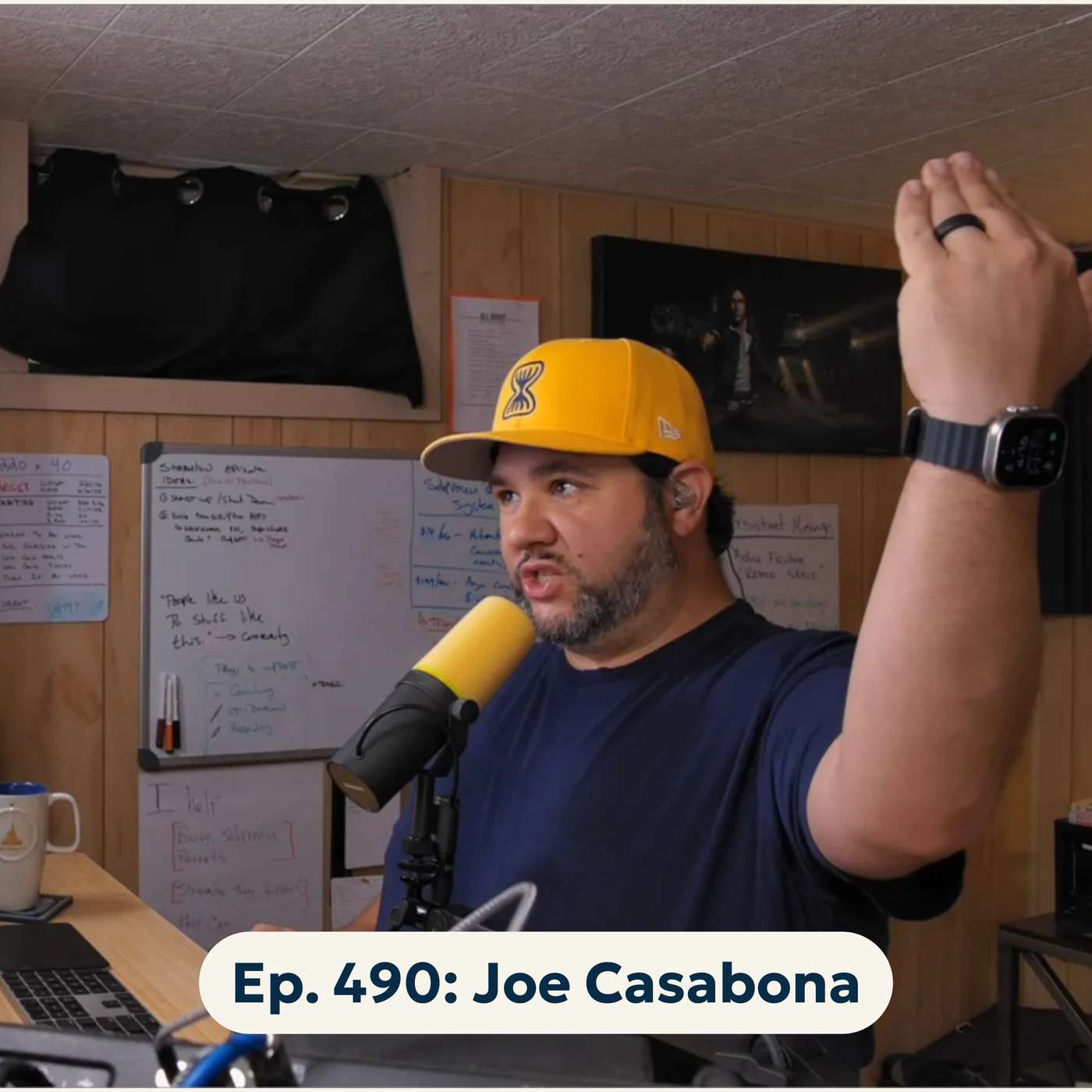

![What do I even do? [Audio Note] What do I even do? [Audio Note]](https://img.transistor.fm/GFZG2ysglcs_u_sr7ukUJ40lRBFNUEJoQc3a2lCl4S8/rs:fill:0:0:1/w:1400/h:1400/q:60/mb:500000/aHR0cHM6Ly9pbWct/dXBsb2FkLXByb2R1/Y3Rpb24udHJhbnNp/c3Rvci5mbS84YWI4/Y2FmNzEzYzE4OTM0/NDM3NjA3ZDI5YWMy/YTk2Ny5wbmc.jpg)

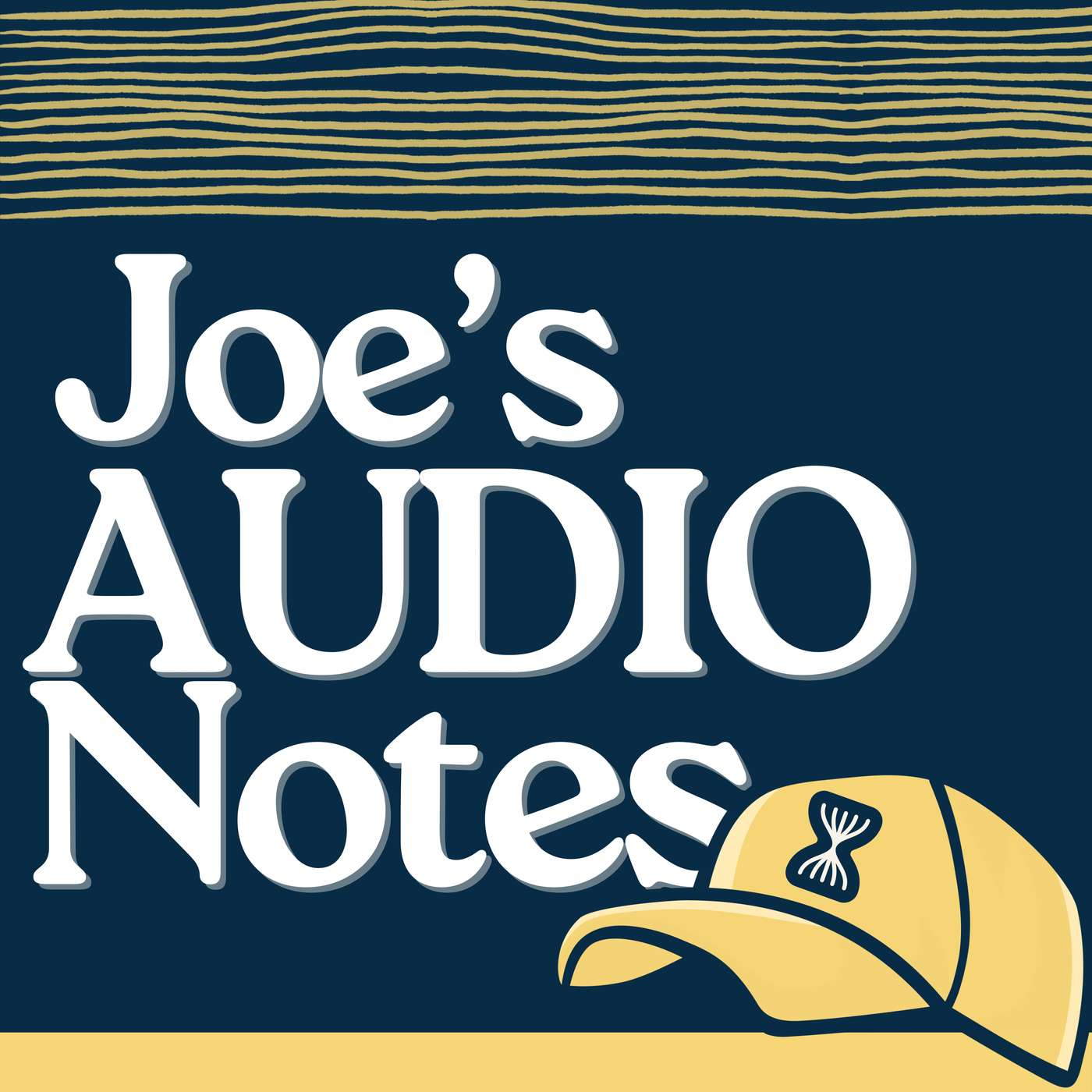



ה אא טום וא
didn't make to third minute, what a disappointment!